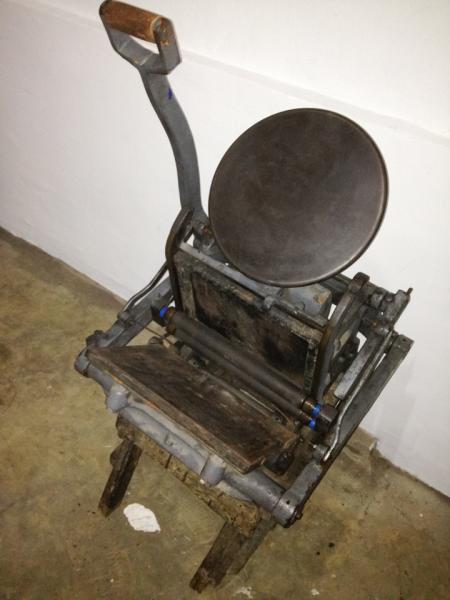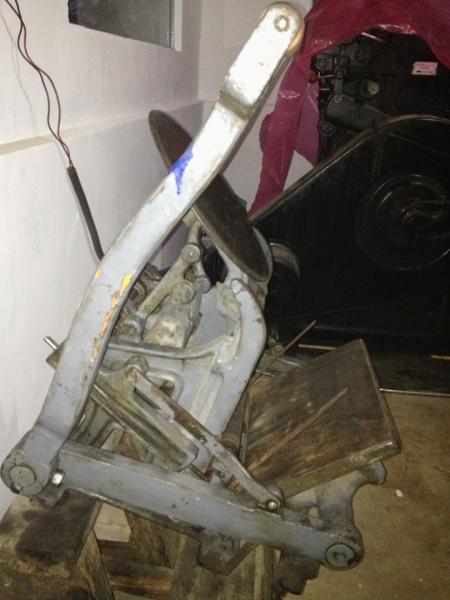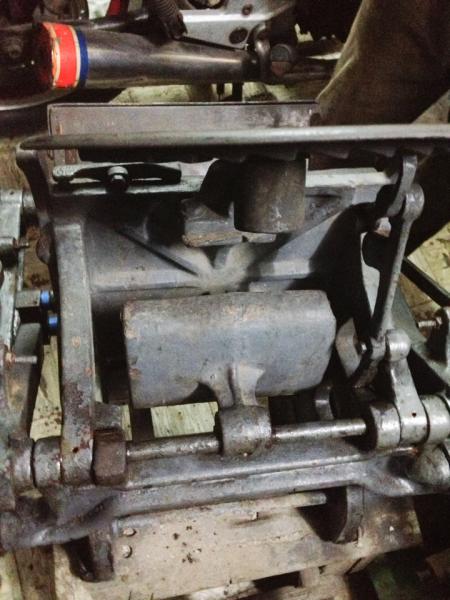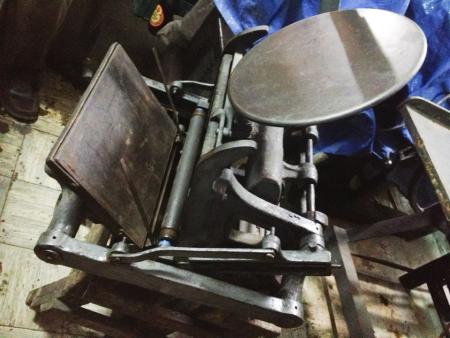Please help me with this tabletop Press
Hi all,
Last year I acquired a tabletop press and it’s only now that I have taken the time to run it. It has no markings or label to indicate the manufacturer. Would appreciate if any of you can help me identify this press.
After several tries, I noticed that the impression is not good. The text were not fully covered with ink. So I don’t know if I need a thicker base (I used the standard boxcar base) or I need to change the rollers? It’s my first time to operate a tabletop press, any help will be appreciated.
- Leo T.

table top letterpress top view.jpg

tabletop letterpress sideview.jpg

table top letterpress back.jpg

table top letterpress closeup.jpg
It is hard to tell from your photos — are the roller surfaces in good condition — smooth and cylindrical so there is no wobble when you roll them on a flat surface? Are the roller trucks the same diameter as the rollers? Assuming you have a British or American press (though it looks to me like it might be German) it was designed to print from a .918 inch high surface (a German press would be different). Have you checked the height of the roller rails above the bed surface? (This should be .918 for a British or American press.) Have you adjusted the platen, with a minimum of packing on it, so that it is exactly parallel to the bed of the press and .918 inches from the bed all over? If all those items check out correct, your problem could be the amount of ink or the cleanliness of the rollers and ink disc as well as the plate you are trying to print. Examples of the printed sheets to see the problem would also help.
Bob
Having a very large counter weight I thought it was a Liberty
https://www.flickr.com/photos/75606019@N08/albums/72157665882470524
but I can see there are differences.
Underlay your job (put a piece of thin card behind the forme before you lock it in) to bring it closer to the rollers that should get more ink on the print surfaces.
Hard to tell, but from the pics, those rollers don’t seem too happy
Hard to tell, but from the pics, those rollers don’t seem too happy
Purely visual inspection does not always tell the whole story, even the checking on a flat surface, or even the back-lit test (no visible light under, on complete revolutions) etc., etc.
Possibly try the following:- M/c., inked up, as normal, NO forme or chase in, with a few sacrificial sheets of stock, the exact width of the Ink Disc, longer matters not, and then with a sheet on the Ink Disc, bring the Rollers Up and Over the sheet, until the top roller reaches its highest point, hold the M/c. in that position , (with a second pair of hands, of course) retrieve the sheet from under the Rollers, will give a Perfect read-out of the coverage, OR OTHERWISE! of the performance of the rollers, swapping Top to Bottom, for a second test, usually.
This trick/tip learned a long time ago, by default,? when accidentally, *putting one around the rollers* on an automatic M/c
.
Of course always, bad news with a sheet AROUND the rollers, rather than *above*
.
Apologies for stating/asking but with the absence of any packing, (apparently) Have You attempted to PACK, to any recognised packing thickness, or attempted to set the impression bolts, usually 4 at the rear of the Platen Proper, (3 of the possible 4 can just be seen) have You had chance to find or set these, + there should be One maybe Two, Platen retaining Bolts, ALWAYS backed off before adjustments.!!
Have You had the chance to run a straight edge, (steel ruler or similar) across the face of the platen proper, where the packing was or should be, looks very unloved.???
Again, apologies for pointing out what may NOT be the obvious, but easily overlooked with a new machine.
Good Luck. Mick.